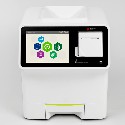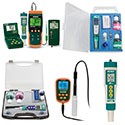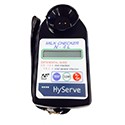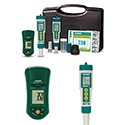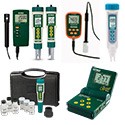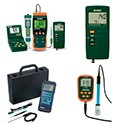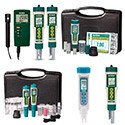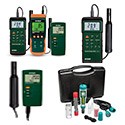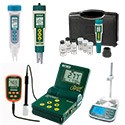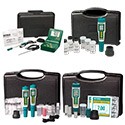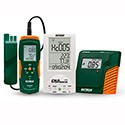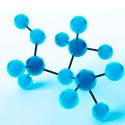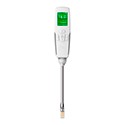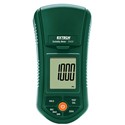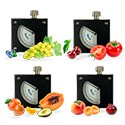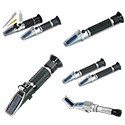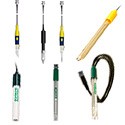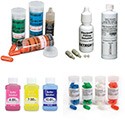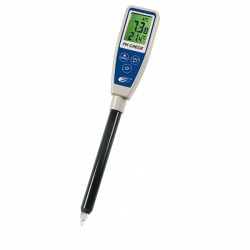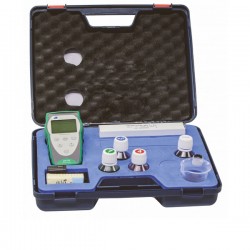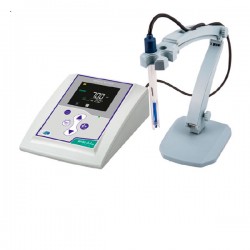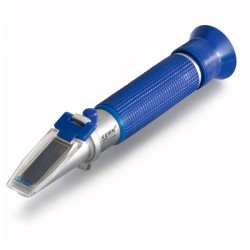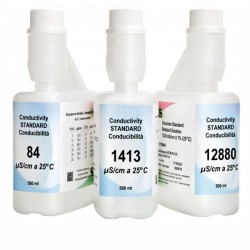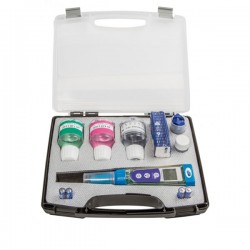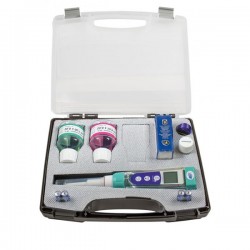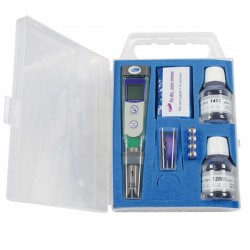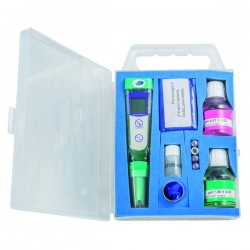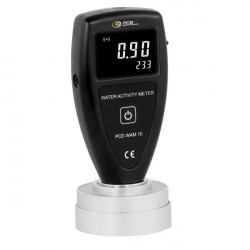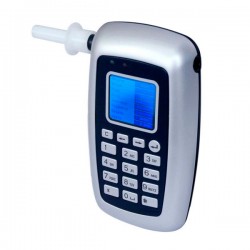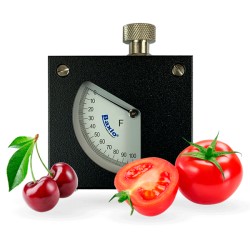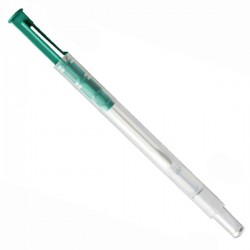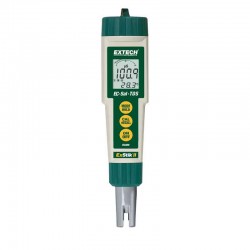No products
Prices are tax excluded
Analytical Instruments
- Alcoholimetry
- Water
- Analisadores NIR
- pH Meters
- Dairy products
- AW
- Chlorine Meters
- Conductivity Meters
- ORP/REDOX Meter
- TDS Meters
- Oxygen Meters for Measurement in Air and Dissolved Oxygen (OD or DO)
- Salinity Meters
- Measuring KITS
- Fluoride
- Formaldehyde
- Glicose
- TPM (Total Polar Material)
- Turbidity
- Fruit Firmness Testers
- Refractometers
- pH Electrodes for Laboratory and Process Applications
- Buffers, Standards and Electrolytes
- Microbiology
New products
-

Hygrometer Elcometer 308
Elcometer 308 Hygrometer Reference: 308-1C The Elcometer 308 Hygrometer...
515,00€ -

Automatic Pull-Off Hydraulic Adhesion Gauge Elcometer 510 - F510-20T
Elcometer 510 Model T Automatic Adhesion Tester; 20mm Kit The Elcometer...
3 146,00€ -

Ethernet Analog Output Module Teracom TCW280
TCW280 Ethernet Analog Output Module The TCW280 is a professional-grade...
272,70€ -

Energy Logger Tinytag TGE-0001 Gemini Data loggers
Tinytag Energy — TGE-0001 The Tinytag Energy Logger TGE-0001 is a...
1 140,00€ -

Waterproof Soil pH Meter PCE-PH20S
Waterproof Soil pH Meter – PCE-PH20S (IP67) with External Electrode The...
149,90€ -

Professional Kitchen Thermometer THERMO JACK JET 30.1069.10
Professional Kitchen Thermometer THERMO JACK JET 30.1069.10 The THERMO...
24,60€ -

Industrial Remote Monitoring via GSM/GPRS with Alarms | HWg-Ares 12
Remote Monitoring and Alarm System via GSM/GPRS The HWg-Ares 12 is an...
587,70€ -

Ethernet I/O Module with Modbus TCP/IP | Teracom TCW241
TCW241 – Ethernet I/O Module with Modbus TCP/IP, 4 Relays, 4 Digital...
185,90€ -

Rugged IP68 Waterproof Temperature & Relative Humidity Data Logger Gemini Tinytag Plus 2 — TGP-4500
Tinytag Plus 2 — TGP-4500 Rugged and Waterproof Temperature and Relative...
260,72€ -

Datalogger - Thermo-Hygrometer PCE-HT 112
PCE-HT 112 Thermo-Hygrometer The PCE-HT 112 temperature and relative...
116,90€ -

Automatic Pull-Off Hydraulic Adhesion Gauge Elcometer 510 - F510-20S
Elcometer 510 Model S Automatic Adhesion Tester; 20mm Kit The Elcometer...
2 731,00€ -

Submersible Temperature Data Logger – Tinytag Aquatic 2 TG-4100 Gemini Data Loggers
Tinytag Aquatic 2 TG-4100 – Submersible Temperature Data Logger Robust...
163,53€ -

-

Datalogger USB de Temperatura e Humidade EasyLog EL-USB-2-LCD+
EasyLog EL-USB-2-LCD+ – USB Temperature & Humidity Data Logger...
118,50€ -

Earth Ground Resistance Tester PCE-ERT 10
Earth Ground Resistance Tester PCE-ERT 10 The PCE-ERT 10 Ground...
198,90€ -

Handheld Vibration Meter PCE-VT 1100
Handheld Vibration Meter The PCE-VT 1100 handheld vibration meter is a...
291,90€ -

Energy Monitoring Module with Ethernet, Modbus Gateway and Data Logger - Teracom TCW260
Energy Monitoring Module The TCW260 is a high-performance energy...
283,70€ -

Ultrasonic Material Thickness Gauge Elcometer MTG8-TXC
Material Thickness Gauge The Elcometer MTG Ultrasonic Thickness Gauges...
2 449,00€ -

Sound Level Meter PCE-MSL 1
Product Description The PCE-MSL 1 sound level meter is a compact and...
36,90€ -

4G LTE Wireless I/O Module with MQTT - Teracom TCG120-4G
4G LTE Wireless I/O Module with MQTT Support The TCG120-4 is an...
269,70€ -

Industrial IoT module Teracom TCW242
Smart Ethernet controller for industrial automation The Industrial IoT...
225,10€ -

Ultrasonic Material Thickness Gauge Elcometer MTG6-TXC
Material Thickness Gauge The Elcometer MTG Ultrasonic Thickness Gauges...
1 930,00€ -

Particle Counter PCE-RCM 12
Product overview – PCE-RCM 12 particle counter The PCE-RCM 12 particle...
466,90€ -

Particle Meter PCE-RCM 02
Product Description The PCE-RCM 02 Particle Meter is an advanced,...
131,90€ -

Elcometer MTG Ultrasonic Material Thickness Gauge MTG2-TXC
Material Thickness Gauges The Elcometer MTG range delivers fast,...
1 126,00€ -

Mini Anemometer PCE-MAM 2
Product Overview The PCE-MAM 2 pocket-size mini anemometer delivers...
38,90€ -

Mini Thermo-Hygrometer PCE-444
Product Description The PCE-444 Mini Thermo-Hygrometer is a compact and...
38,90€ -

Infrared Thermometer - ScanTemp 355
Overview The ScanTemp 355 adds a circle laser sight and lets you read...
42,00€ -

Infrared Thermometer PCE-889B
Overview The PCE-889B infrared thermometer delivers fast, non-contact...
160,90€ -

Reliable IP Monitoring & Control for Sensors and I/O Poseidon2 3268
Poseidon2 3268 — Reliable IP Monitoring & Control for Sensors and...
458,70€ -

Temperature & Humidity Transmitter 4–20 mA — Ref. T3110
Temperature & Humidity Transmitter The T3110 is a temperature and...
225,00€ -

Ultrasonic Material Thickness Gauge Elcometer MTG4-TXC
Material Thickness Gauge The Elcometer MTG Ultrasonic Thickness Gauges...
1 450,00€ -

Stainless Steel Bench Scale 6 Kg — Ref.: FOB 6K2
Description The compact stainless steel bench scale with color-guided...
240,00€ -

Wall-Mount Temperature & Humidity Sensor HTemp-1Wire-Box2 | HW Group
HTemp-1Wire-Box2 Temperature & Humidity Sensor The HTemp-1Wire-Box2...
130,90€ -

Environmental gateway with LTE TDSBOB03
3-in-1 environmental gateway with LTE, PoE and IP67 The Aranet PRO Plus...
560,00€ -

Precision Balance 60 g | 440-21A
The 440-21A precision balance delivers fast, reliable weighing up to 60...
380,00€ -

Professional SNMP Device for Remote Environment Monitoring STE2 PLUS | HW Group
STE2 PLUS — Professional SNMP Thermometer for Remote Environment...
349,00€ -

Infrared Food Thermometer PCE-IR 100 (HACCP)
Description The PCE-IR 100 combines fast, hygienic non-contact infrared...
89,90€ -

Thermal Environment Meter PCE-WB 20SD
Overview The PCE-WB 20SD is a data-logging thermal environment meter...
560,90€ -

Thermal Environment Meter – PCE-WBGT 10
Thermal Environment Meter The PCE-WBGT 10 Thermal Environment Meter is...
137,90€ -

Data Logger with Display for Temperature, Humidity, Dew Point and Pressure
LOG220 PDF – Data Logger with Display for Temperature, Humidity, Dew...
97,00€ -

Environmental Meter — 5-in-1 PCE-EM 883
5 environmental parameters Sound level meter | Lux meter | Anemometer |...
222,90€ -

LAN & Wi-Fi Thermometer for Remote Monitoring | STE2 R2 — HW group
STE2 R2 — LAN & Wi-Fi Thermometer for Remote Monitoring STE2 R2...
245,00€ -

WiFi Remote Temperature Sensor with External Thermocouple – 21CFR
EL-WiFi-21CFR-TC | EasyLog The EL-WiFi-21CFR-TC is an advanced...
227,50€ -

Temperature and Humidity Mini Sensor TDSPT101
Aranet T/RH Mini Sensor Product Code: TDSPT101 Compact, wireless sensor...
80,00€ -

Digital Force Gauge PCE-FM 200
Tension and Compression Measurement up to 200 N The PCE-FM 200 digital...
351,90€ -

-

Oxygen Content in Liquids PCE-DOM 10
PCE-DOM 10 Water Analyzer The PCE-DOM 10 Water Analyzer is a...
284,90€ -

Professional Oven Thermometer with Flexible Metal Probe 14.1037
Key Features Accurate monitoring of cooking chamber temperature up to...
28,00€ -

Multilogger M1220 – Thermo-Hygrometer with 4 Inputs
Product Overview The Multilogger M1220 is a versatile universal...
765,00€ -

Aranet Radon Plus PRO – Advanced Indoor Air Quality Monitoring Radon Plus PRO TDSPSR02
Advanced Radon Indoor Air Quality Monitoring The Radon Plus PRO delivers...
249,00€ -

Temperature and Humidity Data Logger with Display LOG210 TC PDF
LOG210 TC PDF - Temperature and Humidity Data Logger The LOG210 TC PDF...
103,00€
EMI, LDA, Edifício Estoril Office, Av. República 3000A, Esc. 19A, 2649-517 Alcabideche PORTUGAL
Analytical Instruments and Sensors measure critical parameters such as Glucose, protein, gluten, pH/ORP, chlorine, turbidity, fluoride, TDS, salinity, dissolved oxygen and conductivity in a wide variety of applications for reliable monitoring and control. EMI-LDA.com offers a broad portfolio of analytical instruments and sensors to help run labo...
Analytical Instruments and Sensors measure critical parameters such as Glucose, protein, gluten, pH/ORP, chlorine, turbidity, fluoride, TDS, salinity, dissolved oxygen and conductivity in a wide variety of applications for reliable monitoring and control. EMI-LDA.com offers a broad portfolio of analytical instruments and sensors to help run laboratories, HACCP, research, development and biosciences smoothly, efficiently and safely, allowing users to optimize costs.
Analytical Instruments There are 68 products.
Subcategories
Alcoholimetry
Breathalyzers: Precision and Safety in Alcohol Measurement
A breathalyzer is a high-precision device used to measure the concentration of ethanol in the body, known as Blood Alcohol Content (BAC). This measurement is performed quickly and non-invasively by analyzing the breath exhaled (Breath Alcohol Content – BrAC) during a blow.The detection of alcohol in the body is carried out using two main analytical methods: electrochemical sensor technology or infrared absorption, both widely recognized for their reliability and accuracy.
The scientific basis of breathalyzers lies in the physiological relationship between the alcohol concentration in alveolar air and the alcohol level in the blood. While this relationship may vary across countries due to physiological differences in the population, it allows for an effective conversion. In Portugal, it is established that 1 mg of alcohol per liter of exhaled air (BrAC) corresponds to 2.3 g of alcohol per liter of blood (BAC):
1 mg/L (BrAC) = 2.3 g/L (BAC)
Although breathalyzers are primarily used for monitoring alcohol levels in road traffic enforcement, their application has been expanding to other sectors. A growing number of companies are adopting this technology to enhance workplace safety, ensuring that employees are not under the influence of alcohol while performing their professional activities.
By implementing breathalyzers, organizations promote safety, responsibility, and risk prevention, making these devices essential allies in protecting lives and ensuring compliance with regulations.
Water
Multi-parameter meters for water analysis, reagents and accessories designed for water analysis and treatment. Our highly accurate and easy-to-use pH, redox, chlorine, conductivity, dissolved oxygen, water analysis kits (acidity, alkalinity, ammonia, chlorine, hardness, oxygen, among others.)
Analisadores NIR
Tradition of several decades of development of patent NIR analyzers.
Our NIR meters are accurate, and provide reliable data for industry and research. NIR analyzers have become an indispensable tool for fast and accurate monitoring and analysis in industrial processes to maintain consistent product quality, increase yield, maximize efficiency and minimize waste in food products.pH Meters
EMI LDA goal is to make pH testing easy and accessible to everyone. Professional pH instrument for special analyses, particularly in environmental, chemical, food and beverage industries. We can help you find the best device for pH measurements.
Dairy products
Solutions for the dairy industry, from milk collection, handheld milk analyzers and somatic cell counters that can respond quickly to the dairy industry's needs. Milk analyzer capable of rapid mastitis response. The milk analyzer is a suitable instrument for milk producers.
The latest innovation in the prevention of mastitis that makes possible the accurate diagnosis of subclinical mastitis.AW
Water (AW) activity is an increasingly used parameter for quality control in preventing microbial reproduction, oxidation and product reactions, ensuring quality and shelf life of food, pharmaceutical and cosmetic products.
Chlorine Meters
EMI LDA offer accurate and cost effective way to measure chlorine. Chlorine Meter provides a quick and easy measurement of free or total chlorine.
Conductivity Meters
Easy-to-use, waterproof and high-quality conductivity meters. Conductivity measurement is an extremely widespread and useful method, especially for quality control purposes.
Surveillance of feedwater purity, control of drinking water and process water quality, estimation of the total number of ions in a solution or direct measurement of components in process solutions can all be performed using conductivity measurements.The high reliability, sensitivity and relatively low cost of conductivity instrumentation makes it a potential primary parameter of any good monitoring program. Some applications are measured in units of resistivity, the inverse of conductivity. Other applications require the measurement of total dissolved solids (TDS), which is related to conductivity by a factor dependent upon the level and type of ions present.
Conductivity measurements cover a wide range of solution conductivity from pure water at less than 1x10-7 S/cm to values of greater than 1 S/cm for concentrated solutions.
In general, the measurement of conductivity is a rapid and inexpensive way of determining the ionic strength of a solution. However, it is a nonspecific technique, unable to distinguish between different types of ions, giving instead a reading that is proportional to the combined effect of all the ions present.ORP/REDOX Meter
ORP, or Redox Potential, is a measurement of water’s ability to oxidize contaminants. The higher the ORP, the greater the number of oxidizing agents.
Checking ORP is a simple method to monitor the effectiveness of a sanitizer or the quantity of anti-oxidants in a liquid. In generalized terms for humans, a higher ORP is better for outside of the body, while a lower ORP is preferred for consumption due to the high anti-oxidant value.
There are numerous applications for ORP, each with its own specific optimum value. For example, the minimum ORP for pool & spa disinfection (set by the World Health Organization) is 650 mV. Though the WHO has not set a standard for ORP in drinking water, anything below -550mV is considered too strong and not recommended for drinking.
TDS Meters
A TDS Meter indicates the Total Dissolved Solids (TDS) of a solution, i.e. the concentration of dissolved solid particles.
Dissolved ionized solids, such as salts and minerals, increase the electrical conductivity (EC) of a solution. Because it is a volume measure of ionized solids, EC can be used to estimate TDS. Dissolved organic solids, such as sugar, and microscopic solid particles, such as colloids, do not significantly affect the conductivity of a solution.
The most accurate way to measure TDS of water in a laboratory is to evaporate the water leaving behind dissolved solutes as residue and then weighing the residue.
Oxygen Meters for...
Oxygen saturation (symbol SO2) is a relative measure of the amount of oxygen that is dissolved or carried in a given medium. It can be measured with a dissolved oxygen probe such as an oxygen sensor or an optode in liquid media, usually water. The standard unit of oxygen saturation is percent (%).
Oxygen saturation can be measured regionally and noninvasively. Arterial oxygen saturation (SaO2) is commonly measured using pulse oximetry. Tissue saturation at peripheral scale can be measured using NIRS. This technique can be applied on both muscle and brain.
Monitoring of the oxygen amount in the air is, extremely important, since it is not always that harmless and too much oxygen in the air may indicate a dangerous situation. The measurement of oxygen is particularly important in the workplace monitoring and process control, medicine, food technology, ventilation and sport. We offer measuring devices and special sensors that can be used in wide applications.
Salinity Meters
Salt meter range you can measure salt content following the direct method with the help of the optical Salinity meter.
The salt meter is suitable for measuring salt contents in aqueous solutions or viscous media. We recommend using the salinity to measure sea water or solutions with high salt content. With the indirect method you will obtain the conductivity value which will proportionally increase with the salt content.
You can choose between a salt meter for flowing or pure water (it is important for certain industries). We offer a salt meter with different conductivity measurement fields. It is important to know that a salt meter usually emits electric conductivity as a measurement value in µS/cm.
Measuring KITS
Kits for measuring conductivity, TDS, salinity, pH, mV, ORP, chlorine, STD and temperature.
Fluoride
The chemical symbol fluorine F is very abundant in the earth's crust, representing about 300 mg/kg3 of its composition. It is the most electronegative chemical element of the periodic table and the most reactive, not being free, but always combined with calcium, sodium, aluminum, as fluoride (F-) and sometimes as part Of the composition of some silicates.
Fluorides are ubiquitous, present in the soil, forming part of the composition of many minerals, such as fluorite (CaF2), cryolite (Na3Al F6), fluorapatite Ca5(PO4)3 F; In air (particulate form) and dissolved in water.
Their existence in the environment is due in part to natural sources, including volcanic activity and marine aerosols and anthropogenic or man-made sources resulting from all man's activity, including the manufacture of steel, primary production of aluminum, copper and nickel production, pesticide production, the production and use of phosphate fertilizers, the manufacture of glass, ceramics, glue and adhesives etc.
Fluoride, which occurs in biological fluids such as fluoride ion F-. In cases of occupational exposure or food and water for human consumption, excessive levels of fluoride in the body may cause health risk. Fluoride is easily determined using the meters available from EMI LDA.
Formaldehyde
Formaldehyde is a volatile organic compound developed from methanol. Formaldehyde prevents the growth of microorganisms in products for the conservation of the same. At room temperature, formaldehyde is a colorless gas that evaporates easily, is highly flammable and reactive.
Glicose
Glucose can be measured in both Clinical Research and Industrial, Commercial & Biotechnology applications
Clinical & Research
Glucose can be measured in these areas:- Diabetes monitoring
- Diabetes clamp studies
- Clinical pathology
Industry & Biotechnology
Glucose can be measured in these areas:
- Biotechnology and pharmaceutical analysis
- Food and beverage analysis
TPM (Total Polar...
Measuring the TPM (Total Polar Material), the content of total polar components of oils for food preparation, determines the maximum point of use of the oil, avoiding saturation and leaving the prepared food suitable for the consumer. TPM quantifies the presence of polar molecules in the oil: the higher this percentage, the greater the level of degradation of that oil. We recommend that the oil be replaced when the TPM reaches 25%, in accordance with European legislation.
Cooking oil develops its best potential between 14% and 20% TPM. Using the TPM meter to detect when the oil should be replaced also ensures that there is no wasted oil and unnecessary costs.
Turbidity
Turbidity meters are essential for use in the food industry, especially beverages such as water, wines and beers, as well as in the pharmaceutical industry. The use of a turbidity meter is indispensable in the process of measuring the substances.
The turbidity meters emit a beam of light on the sample and compare it to a standard. The most used measures are NTU Turbidity Units and FTU, Formazine Turbidity Units.
Fruit Firmness Testers
The Fruit Firmness Testers is an analyzer for controlling the degree of firmness of different types of fruit and vegetables. The meters provide the necessary information on the optimum harvest time and on the maturation process in conservation chambers, in transport and in the respective sale.
The firmness test gauges are ideal for quality control and in field testing and laboratory testing.Refractometers
EMI offer one of the largest choices of refractometers, all refractometers are made to the highest standard. EMI's portable refractometers measure refractive index and other related values, such as, Brix, invert sugar, HFCS42 or HFCS55 or the freezing point of ethylene glycol and propylene glycol/water mixtures or other concentrations of a wide variety of liquids.
pH Electrodes for...
EMI's pH electrodes combine high accuracy and performance with ease of use. High precision and reliability as well as low maintenance make them the natural choice for a wide range of applications.
Buffers, Standards and...
Solutions for Calibration and Maintenance
The determination of pH, conductivity, ion concentration, redox potential and dissolved oxygen are common analyses in most laboratories. The measurement accuracy highly depends on the quality and operation of the solutions used for sensor calibration and maintenance. EMI takes pride in a long tradition of sales complete measurement systems, including a comprehensive range of top quality buffers, standards, electrolytes, cleaning and verification solutions.
Microbiology
EMI with a wide range of instruments and rapid tests for detection of pathogens.
Waterproof pH Check Dostmann 5040-0303
Brand: DostmannpH Check S, ideal for food processing. The pH Check S is a user-friendly and simple to use. PH Check S, pH-instrument with fix mounted insertion probe. Ideal for testing of cheese, meat, ham, semi solid and solid materials
84,00€pH electrode Senseca GE 114 WD
Brand: Senseca Greisinger's pH electrodes combine precision and high performance. High accuracy and reliability as well as low maintenance. The GE 114 WD electrode is precise and designed specifically to measure pH in liquids among other products.
79,70€pH electrode Senseca GE114WD
Brand: SensecaThis professional pH electrode with a Ø12 mm tip penetration electrode is ideal for insertion into semi-solid materials in a wide variety of industries including food processing and agriculture.
133,30€pH 7 Food Set Dostmann 5040-0253
Brand: DostmannThe precise pH-meter SET1 with interchangeable pH electrode (included) special insertion probe for the measurement of meat and other food, features an easy to read, LCD display. The SET1 meter indicates pH over the range of 0,00 to 14,00 pH with a resolution of 0.01 pH and an accuracy of ±0.01 pH.
440,00€Benchtop pH Meter with Electrode
XS pH50 VioLab Benchtop pH Meter with Electrode 201T DHS The 50101032 - XS pH50 VioLab is a professional-grade benchtop pH meter designed for high-accuracy measurement in laboratory and production settings. It comes equipped with the 201T DHS digital electrode, featuring an integrated temperature sensor for optimal precision and efficiency.
420,00€Portable Sugar (Sucrose) Brix...
Portable Brix Refractometer for Sugar – KERN ORA-BA Brand: Kern & Sohn Note: Please select the desired measurement range from the drop-down menu above the "Add to Cart" button.
95,00€Calibration solution conductivity Dostmann...
Brand: DostmannThis Conductivity Calibration Solutions ready made conductivity solutions are in 84 µs/cm, 147 µs/cm, 1413 µs/cm and 12880 µs/cm are suitable for checking conductivity instruments and conductivity electrodes.
30,00€pH buffer solution Senseca PHL
Brand: SensecaThis pH Calibration Buffer Solutions ready made pH buffer solutions are in 4,01, 7,00 and 10,01 are suitable for checking pH instruments and pH electrodes on your range of pH meters and testers.
15,60€Measurement set for measurements of pH,...
Brand: Dostmann Electronic Measurement set for measurements of pH, conductivity, salt, mV, TDS and °C. Set inclusive calibration solutions pH4, pH 7, conductivity solution and batteries.
190,00€PH 5 Food Tester Kit Dostmann 5040-0243
Brand: Dostmann Electronic The PH 5 FOOD pH meter especially for food, indicates pH over the range of -2 to 16 pH with a resolution of 0.01 pH and an accuracy of ±0.01 pH. The measurement set for measurements of pH, mV and temperature, includes buffor solutions pH4, pH 7, conductivity solution, batteries and carryng case.
288,00€Conductivity and TDS Measurement set...
Brand: Dostmann Electronic Measurement set for measurements of conductivity and TDS. Set inclusive calibration solution and batteries.
94,00€PH 1 Tester Kit Dostmann 5040-0240
Brand: Dostmann Electronic Measurement set for measurements of pH, and temperature. Set inclusive buffer solutions pH4, pH 7, and batteries.
86,00€Water Activity Meter PCE-WAM 10
Description The PCE-WAM 10 Water Activity Meter is a portable, highly accurate instrument designed to measure the biologically available water for microorganisms such as bacteria and fungi. Featuring a measurement range from 0.01 to 1 aw and a precision of ±0.03 aw, it is essential for ensuring food quality and safety.
771,90€CDP 8800 Breathalyzer with Keyboard
Brand: Advanced Tecso Breathalyzer with electrochemical sensor designed to carry out alcohol tests at roadside checkpoints or to perform screenings on multiple users. It features a typical sensitivity drift of no more than 0.6% of the measured value per month.
399,00€Cherries and Tomatoes Firmness Tester,...
Brand: Baxlo The durometer or penetrometer 53505/FB is a meter for monitoring the degree of ripeness and firmness in cherries, tomatoes. The meter provides valuable information on the optimum time of harvest and on the maturation process, in conservation chambers, in transport and in the respective sale.
455,88€pH electrode with a stainless steel...
Brand: Senseca This professional meat pH electrode with a stainless steel piercing blade penetration electrode is ideal for insertion into semi-solid materials or compost/soil in a wide variety of industries including food processing and agriculture.
325,90€pH buffer solution set Senseca PHL4710
Brand: SensecaThis pH Calibration Buffer Solutions set ready made pH buffer solutions are in 4,01, 7,00 and 10,01 are suitable for checking pH instruments and pH electrodes on your range of pH meters and testers.
52,20€Lucipac A3 Surface Sterile dry swabs for...
Brand: Kikkoman HyServe LuciPac A3 Surface detects A3 ATP+ADP+AMP to verify surface cleanliness with the Lumitester Smart. Delivery 100 swabs (20 x 5 in aluminum bags).
290,00€Air oxygen sensor, closed sensor Senseca...
Brand: Senseca For low oxygen concentrations, suitable for GMH 369x. Measuring range of oxygen partial pressure between 0 to 1100 hPa O2 and Oxygen concentration between 0.0 to 100.0% O2 with an response time of T90 <10 s.
231,80€ExStik® Conductivity/TDS/Salinity Meter EC400
4-in-1 multi-range sensor for measuring Conductivity, TDS, Salinity and Temperature. The Extech EC400 ExStik® features six units of measure, internal memory that stores up to 25 labeled readings for easy recall, adjustable conductivity to TDS ratio factor from 0.4 to 1.0, and self-calibration upon power up.
172,80€




